If you’ve been reading our extensive archives on Kyoto you’ll already know that Daigoji temple made our list of the 15 top temples in Kyoto city. There are many criteria we consider when compiling our ‘top’ travel lists, some of them are qualitative and others are more about the atmosphere or that special connection we feel with a place.
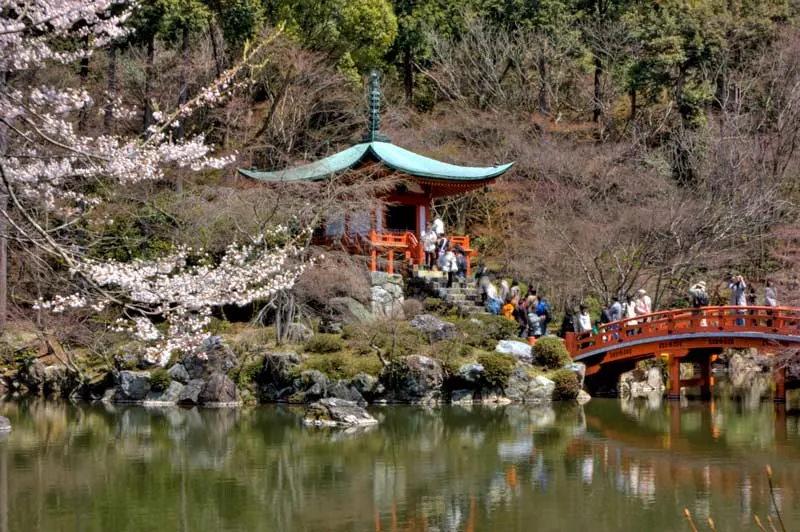
When researching one of our spring visits to Japan we heard about this local festival that re-enacts a hanami party under the cherry trees that was hosted by a great leader of Japan 400 years ago. With a love of Japanese history, sakura and beautiful gardens I knew immediately that Toyotomi Hideyoshi’s cherry blossom viewing parade had to make it onto the itinerary. Japan has many festivals but the local celebrations are very special, they’re beautifully done, not at all commercial and give such a special insight into the culture and community.
Table of Contents
Top 5 reasons to visit Daigoji Temple
Daigoji temple is in the southeast of the city and a little apart from many other attractions but it’s still very easy to get to and well worth the trip. Read on to find out why Daigoji is up there near the top of our Kyoto temples list and learn more about ‘hanami gyoretsu’, the annual sakura parade.
1. The History
Daigo-Ji Temple was constructed in 874. It’s an important site for Japanese Buddhism and is the head temple for the Daigo School of the Shingon sect. It’s also designated as a UNESCO World Heritage site as part of the Historic Monuments of Ancient Kyoto and contains many important cultural assets and national treasures.
The temple originated when a Buddhist monk named Shobo came here in 874 and was guided by a local deity of the mountain to discover a well of holy water. The establishment of the temple began on Kamidaigo mountain with the lower section being developed later.
As its name implies the temple has had a close connection to the Emperor and Imperial family since its beginning. When Emperor Daigo became ill and abdicated in 930 he entered the priesthood at the temple. He died not long after and was buried in the temple. Emperors receive a posthumous name which is why he became Emperor Daigo.
Over the centuries many of the original temple buildings have been lost leaving the 5 story pagoda (Goju-no-to) as the oldest remaining structure. It was built in 951 and is a beautiful example of the style, it’s also the oldest verified building in Kyoto having survived many fires at the temple over the centuries. It’s incredible to see the detail in a structure designed and built over 1000 years ago.
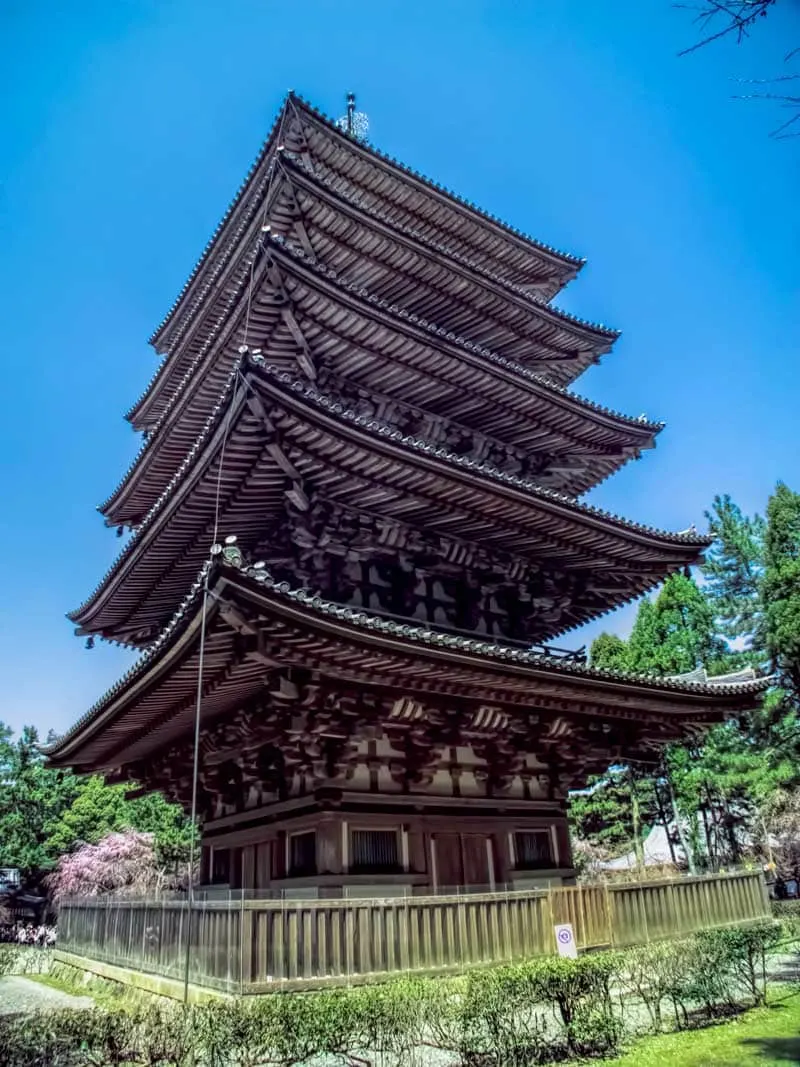
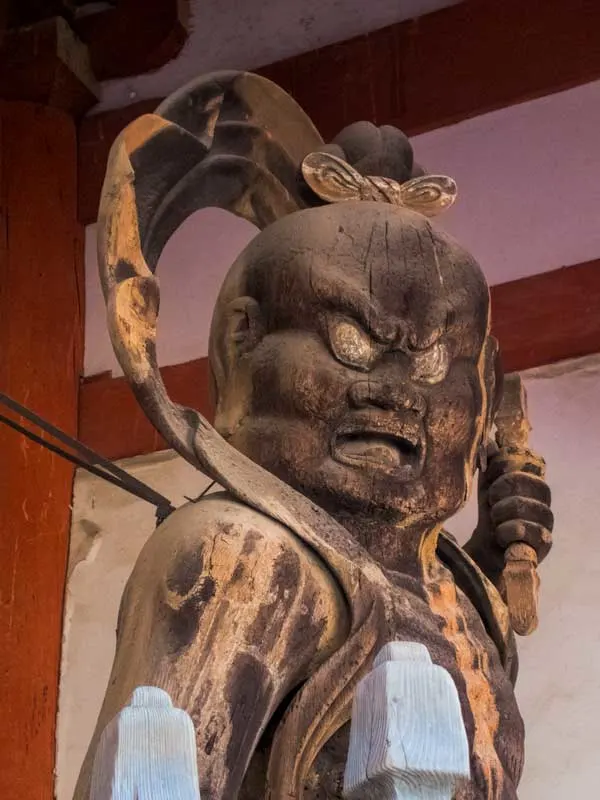
2. The Seasons
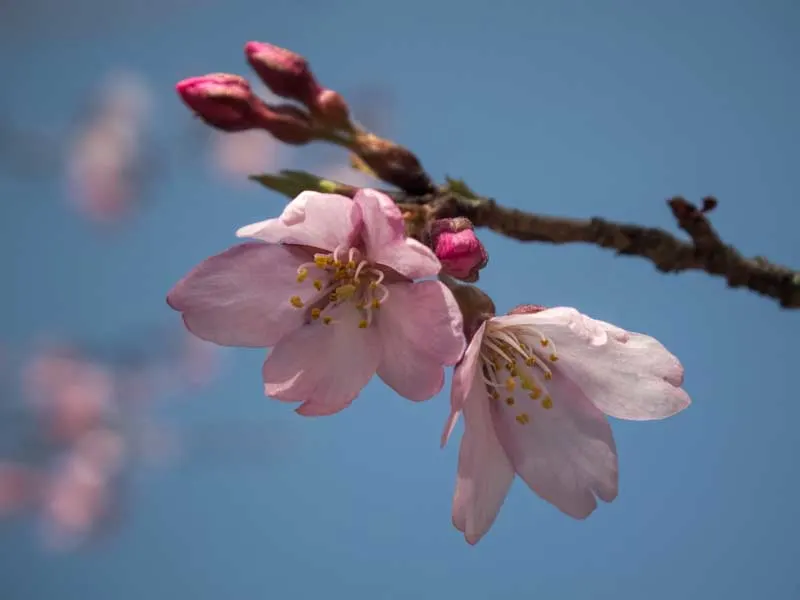
We visited during the sakura (cherry blossom) season and it’s absolutely beautiful at that time of year. We’ve been told that it’s even more beautiful to visit in November when autumn turns the leaves to their jewel-toned hues. I can imagine it would be quite stunning.
We normally try not to duplicate too many places when we travel but we do make exceptions for a few absolute favourites or when there is something special on. When we do make it to Kyoto during the fall leaves season this temple is definitely back on our list and next time I’d like to go through the Senboin and climb to the well on top of the mountain.
3. Festivals
There are a number of events and festivals celebrated at Daigoji temple throughout the year. The most famous is the Ho-Taiko Hanami Gyoretsu or Toyotomi Hideyoshi’s cherry blossom-viewing parade. Hideyoshi-san was a prominent daimyo (feudal lord) and one of the three great historical unifiers of Japan.
In 1598 he had 700 cherry trees planted at Daigoji and the Sanboin and its garden were also built at this time in preparation for a huge party. There were 1300 people including Hideyoshi, his son Hideyori, his wife, and mistresses assembled to enjoy the views.
Today there are over 1000 cherry trees and each year on the second Sunday in April the celebration continues. A re-enactment parade takes place outside the Sanboin temple, the first section of the Daigoji complex then moves through to the Shimo-Daigo. You can see below how the black lacquered gates of the Sanboin bear the gold chrysanthemum, the symbol of the imperial family.
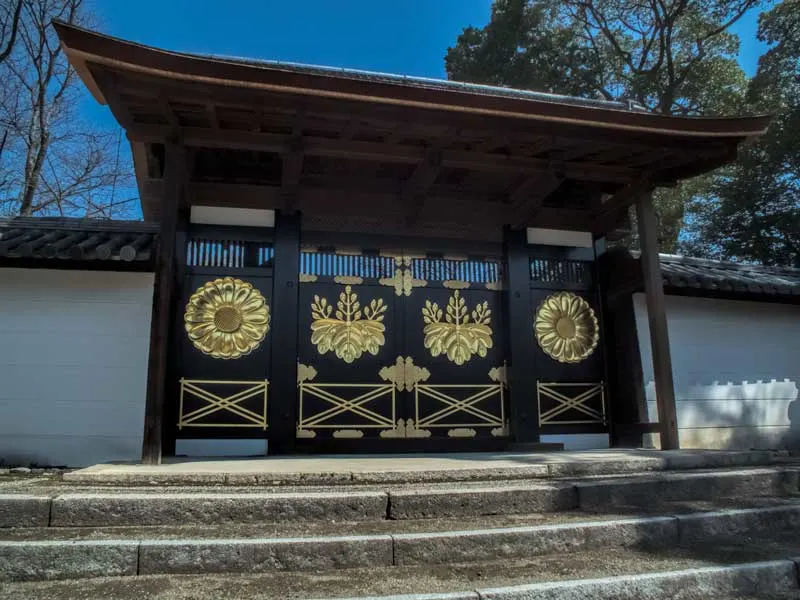
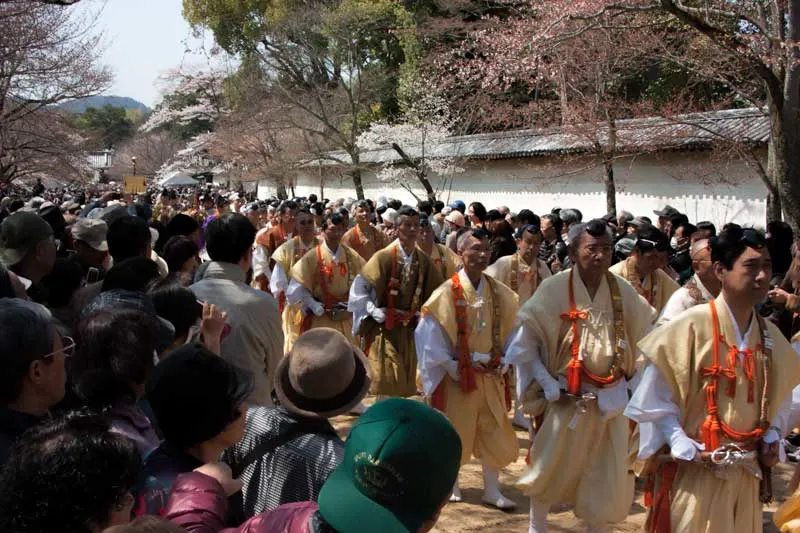
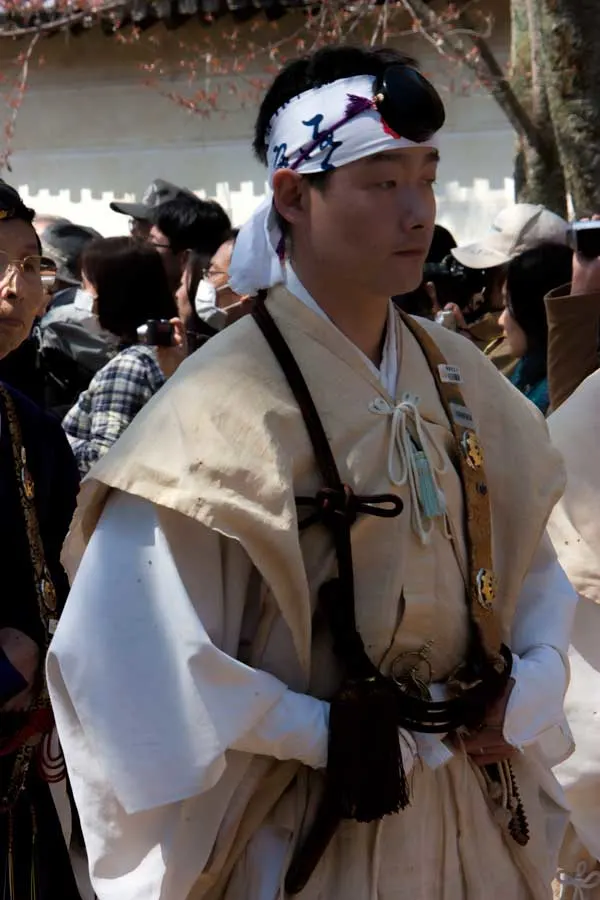
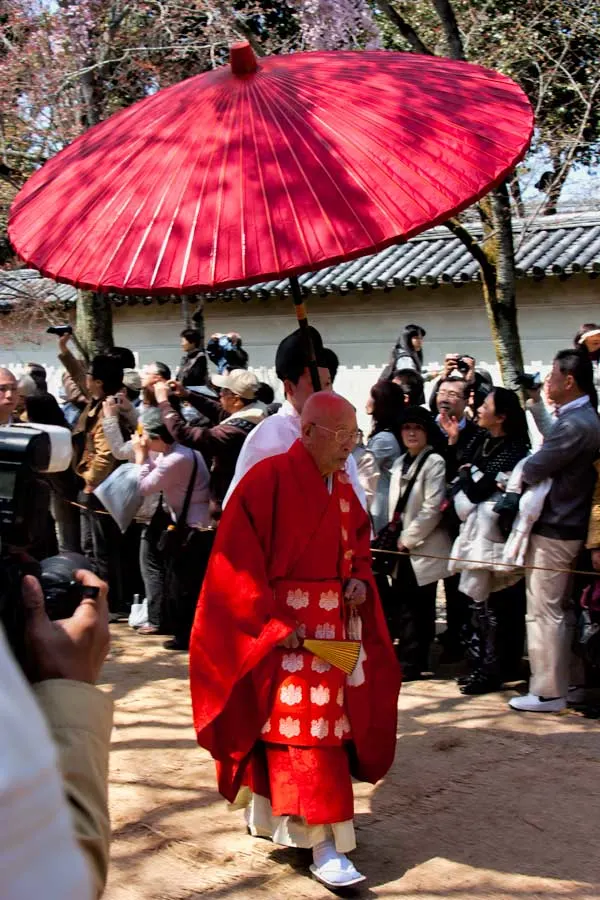
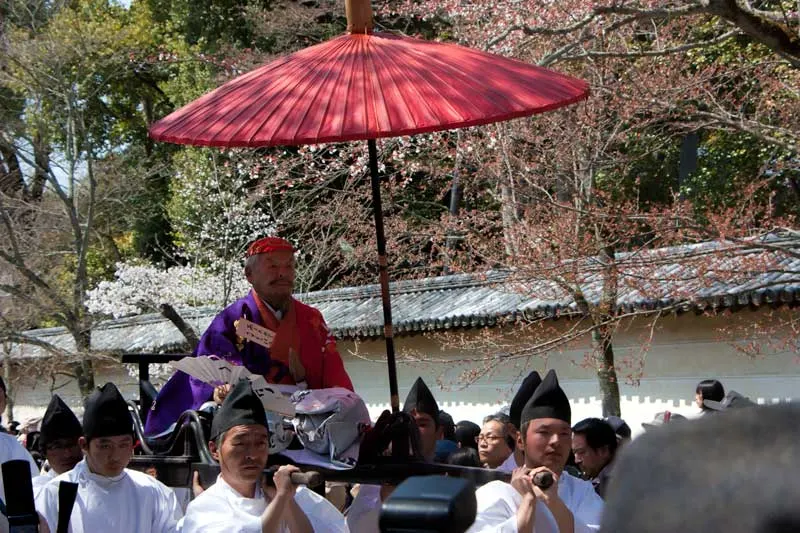
4. The Scale
I wasn’t aware of the size of this temple complex before we got there and with it being a festival day it was too crowded for us to make the climb and explore the upper area. The temple is in 3 parts and if you had the time you really could dedicate a whole day to exploring it.
- The Sanboin temple and gardens
- Shimo-Daigo, the lower section temple area
- Kami-Daigo, the upper section of the temple area including the mountain, the spiritual well and the temple structures
You can see below the number of people as we arrived at the temple gate with the sakura in bloom and the mountain looming up behind. It was super easy to find from the subway station, we were almost swept along in the surge so knew we were going the right way. It gives you an idea of how huge the complex is that once inside the lower area, it wasn’t too crowded at all. The parade itself is held back in the area you can see here so that was pretty cozy with everyone condensed into this narrow first section.
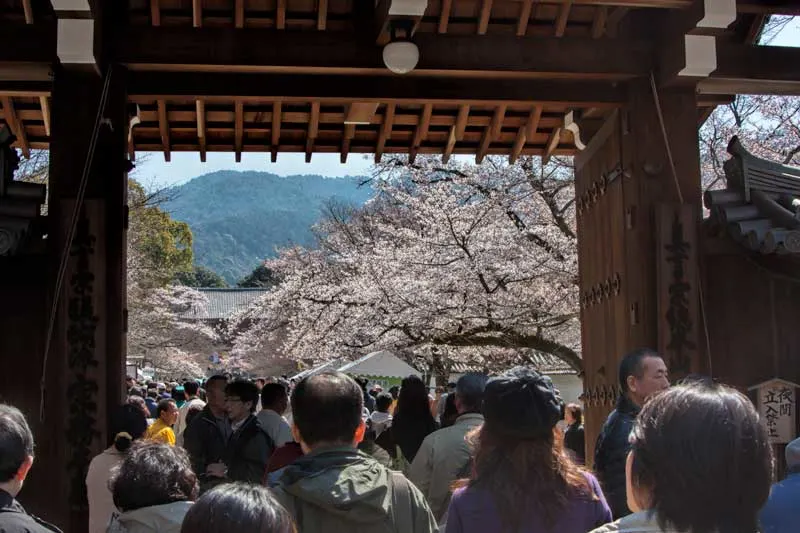
5. The architecture
There are a variety of buildings in the temple complex, some such as the 5-story pagoda have been mentioned already but these are a few others that caught our attention. This first one is a tutelary (guardian) shrine for the local deity of Daigoji called Seiryu Gongen. The first shrine was built up the mountain and this one was added in 1517.
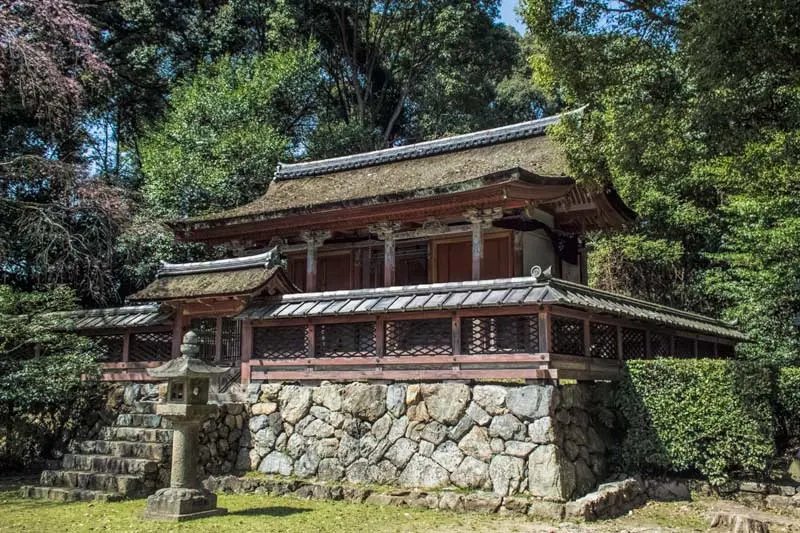
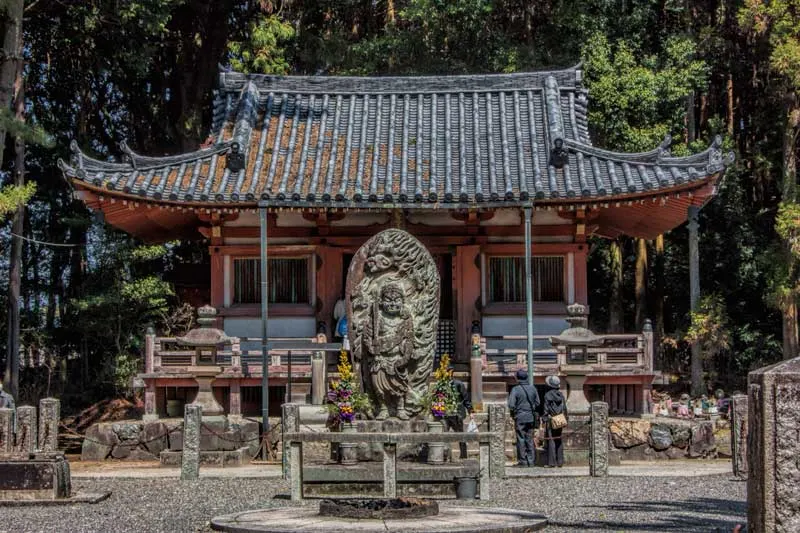
Another interesting older building in the lower section is the Fudo Hall. There are 5 statues of Myo-o (the guardian kings) with Fudo Myo-o in the centre and in the carving outside. Fudo is a guardian of Buddhism and its followers. His statue looks a little scary with a sword in one hand and fire burning in front or around him but the flames purify and consume the evil in the world around us.
We were fortunate to see the Shinnyo Sanmaydo hall with the shutters up. The hall was originally built as the Hokke Sanmayado Hall in 949 upon the request of Emperor Suzaku but it burned to the ground in 1470. The present hall we see here was built in 1997 as Shinnyo Sanmayado. Shinnyo is a modern branch of the Shingon sect of Buddhism, it follows the Mahayana principles and believes that all beings possess within them buddha nature. The nirvana statue of the reclining Buddha that you can just see behind the priest is characteristic of this new branch which was only founded in 1936.
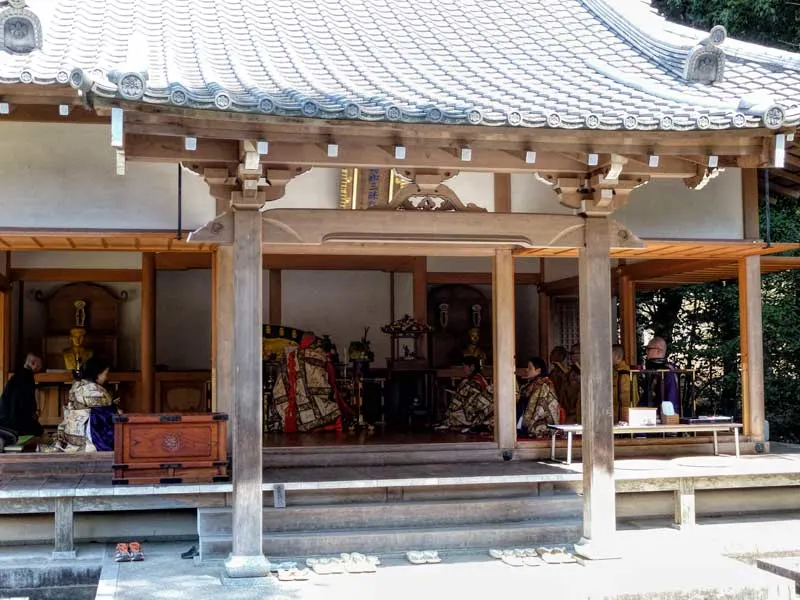
6. Cultural Significance
While at Daigoji temple you’re likely to see a few people wearing the traditional clothes of the walking pilgrim. It’s something that is relatively common to do in Japan but while historically it was done on foot and sometimes it still is, it’s also not uncommon to now see them climbing out of cars or even buses outside the temple gates.
It’s something that fascinates me, especially the Shikoku Pilgrimage which covers 88 temples connected to the Buddhist monk Kokai (Kobo Daishi). Some of the sites associated with Kobo Daishi we have visited are a very special ume tree on Mt Misen in Hiroshima that is said to have sprouted from his walking staff, Kiyomizudera temple in Kyoto and the caves at Hasedera in Kamakura.
Pilgrimages have been part of Japanese culture and religious practices since the Heian period.
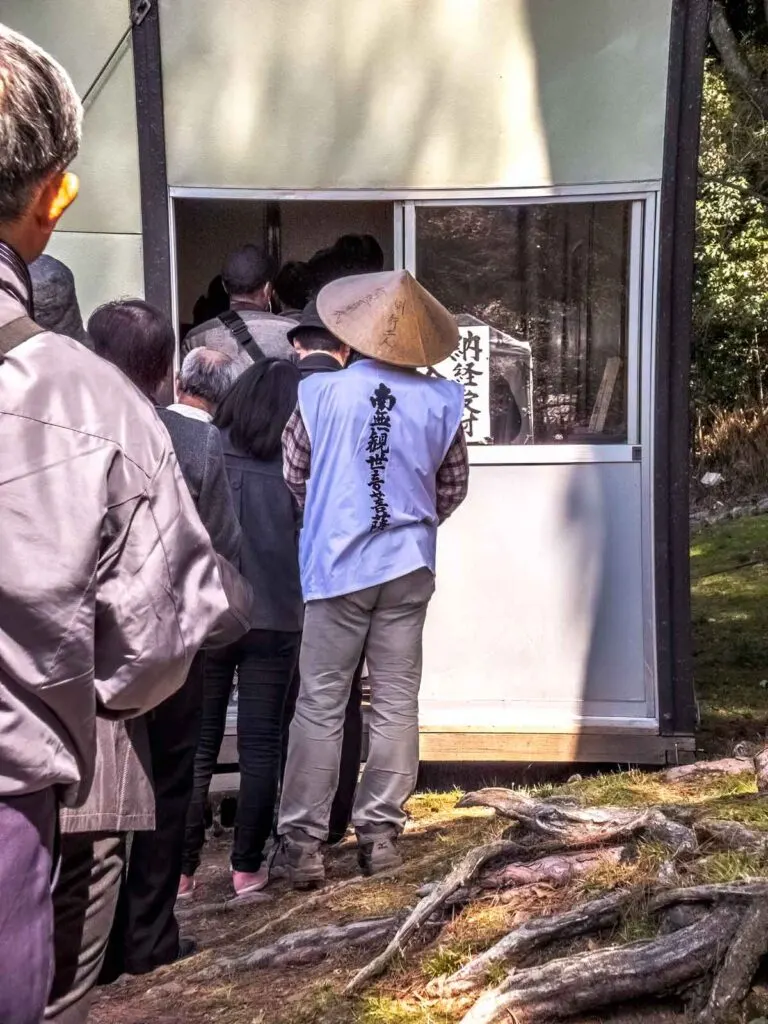
The pilgrims at Daigoji are completing the Saigoku Kannon pilgrimage. Kannon is a boddhisatva, also known as Avalokitêśvara in Sanskrit and is the Goddess of mercy and compassion. Kannon appears in the Lotus Sutra, a well-known text in the Mahayana tradition for its message that we are all capable of attaining Buddhahood. Daigoji is the 11th of 33 temples that pilgrims visit on this route.
The queue here is to have the red stamp added to their Goshuin book, a record of Buddhist temples and Shinto Shrines visited across Japan. They were traditionally used by those making a pilgrimage between temples but are now frequently used by both Japanese and visitors to record their visits to a new temple. It is particularly busy here because each stamp is unique and many will want to have their stamp dated to record the festival.
Daigoji Temple Visitor Information
Opening hours
- From March through to the end of November opening is 9 am until 5 pm.
- From December through to the end of February Daigoji opens from 9 am until 4.30 pm.
- If you are going up to Kami-Daigo you must be back at the bottom of the mountain by 5 pm
Entry fee
This is one of the more expensive temples to visit from our experience around Japan. There are two tickets to purchase if you want to see the whole area.
One is called the combined ticket and it covers the Sanboin, Shimo-Daigo (the lower area) and the museum. This ticket is Y1500 in the peak seasons of spring and autumn or Y800 in summer and winter. You buy this ticket at the Sanboin ticket desk near the front gate.
To climb the mountain to Kami-Daigo, the upper area there is a further Y500 ticket to purchase. If you only wish to explore the mountain area there’s a path to the side that bypasses the lower temple and you can enter directly.
Information in English can be found on the official site including any changes to fees and opening times.
Getting to Daigoji Temple
The address of Daigoji is: 22 Higashioji-Cho, Daigo, Fushimi-Ku, Kyoto 601-1325, Japan
It is easy to arrive via the Tozai subway line although there are paid car parks if you prefer. For visitors arriving at the Daigoji Tozai subway station, it is an easy 15-minute walk in an easterly direction to the temple. Alternatively, there’s a local bus that goes out there on a loop circuit, which means you get back on the bus at exactly the same spot you got off, not the other side of the road, the bus fare for that is Y2oo.
Other useful information for planning your visit to Kyoto
- Our comprehensive Japan guide
- A full archive of our articles on Kyoto
- Our guide to Transport in Japan
- Our popular picks of the top day trips from Kyoto
Have you been to Daigoji Temple? What are your thoughts? Or do you have another special place in Kyoto that you love but it seems to stay under the radar for many tourists and travellers? We’d love to hear from you in the comments below.